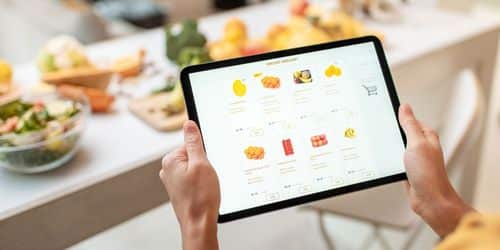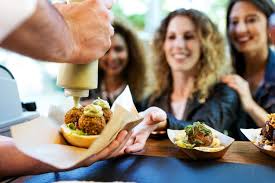While online business has been growing exponentially during the last five to ten years, the global pandemic made the practicality and benefits of eCommerce even more evident. In turn, this type of business has grown even further.
In particular, though, the last few years have seen more and more people become comfortable with ordering and receiving food and drink online.
You may want to get in on this growing trend by starting your own food delivery service. If so, there are numerous steps to follow.
Learn About Competitors
Learning about your competitors is vital in preparing to launch a business. You need to find out if other firms have similar models and operate in the area(s) you plan to, so that you know how customers are currently being serviced and if there are any gaps in what’s being provided.
Learn as much as you can about your biggest competitors, in particular, such as how they operate, what processes their clients go through to get food to their doors, and how much the businesses charge for their food and services. Also, check the types of offerings and various suburbs or towns catered to.
In addition, examine the website or platform competitors use to advertise and sell their food items and the language they use to describe items. Who do competitors target, how long do deliveries take, and what is their customer service like? Also, how and where do these firms market to their audience? Compile a long list of information, and you’ll be in a much better position to establish your own brand in a way that competes effectively.
Get Familiar with the Market
Next, learn as much as you can about the people you plan to sell to, or at least, learn which demographic(s) will be best to target. You need to find out who may be interested in using your services and what they look for when they shop for food online.
For instance, discover where and how they live and work, their household setup, preferences regarding things like organic, natural, or sustainable foods, core age range, and preferred spending ranges. Learn about their hobbies, interests, and more, too.
Once you have this information, ask yourself if there’s enough of a market in the area you plan to serve to make your business concept viable. You might find some people are interested in delivery but that the number of them is too small to enable you to grow an operation that will not only break even but become profitable and keep growing over time.
Determine How Your Business Will Offer Something Different
One of the best ways to ensure your venture has “legs” and the potential to succeed is to ensure you create a point of difference for it. To stand out in an increasingly crowded marketplace and get people to buy from you rather than your competitors, it’s necessary to have a unique selling proposition (USP).
A USP is a way in which a firm does something differently. What can your business do that others don’t, or what won’t you do that other operations continue to do? For example, this might be targeting a specific type of shopper, offering a particular type of cuisine, packaging goods in a certain way, making delivery cheaper or faster, or creating a fun, fresh, interesting brand that people enjoy engaging with.
You might also decide not to charge fees in the same way that competitors do, or to offer your wares on some type of innovative platform. You could concentrate on delivering the most amazing customer service, too, or any number of other ideas. Whatever you pick, make sure you can sustain this point of difference over time and still bring in plenty of profits. Also, look for a USP that others won’t be able to copy easily.
Pay Close Attention to Packaging
Another tip is to pay close attention to how you package the food items you sell on your eCommerce site. If goods don’t get to customers intact and in the form or to the temperature they expect, you’ll likely never get orders from them again. No one wants to receive items that have been damaged in any way in transit, cold items that have melted, or hot food that has lost its heat. As a result, look into ways to use packaging and delivery tools that reduce risks in this area.
For instance, you can buy quality freeze indicators or more general temperature indicators that provide alerts if packages drop below or rise above certain temperatures. Shock indicators also let users know if items have been shaken up or dislodged too much in transit.
You could potentially purchase insulated containers, gel packs, refrigerant solutions, or even come up with your own ideas to help food stay fresh and safe on its way to customers. Packing parcels into vehicles with care can make a huge difference, too.
There are many factors to work on when planning, launching, and growing your eCommerce food business. Focusing on the above elements, though, will help you improve your chances of success right from the start.






